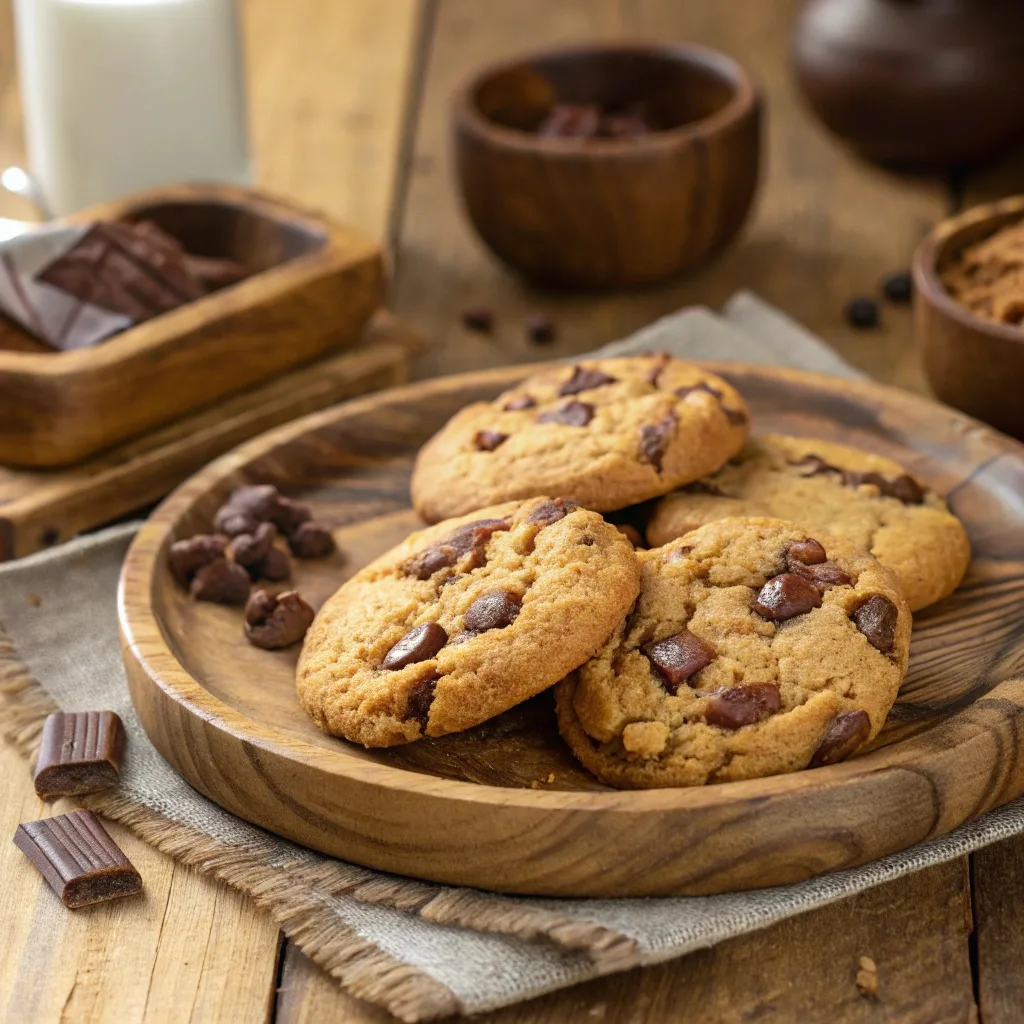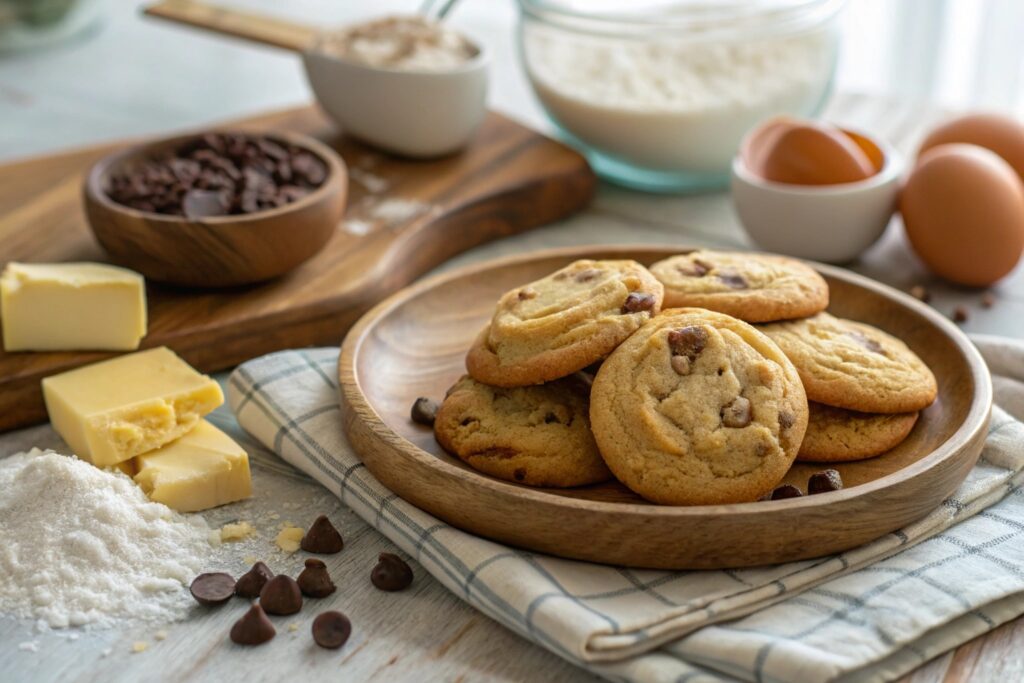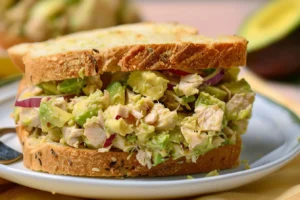Introduction
Baking cookies is an art, and while it might seem easy, achieving the perfect cookie texture can sometimes be tricky. Many bakers face the issue of cookies spreading too thin, resulting in flat, lifeless bakes. So, how do you keep cookies from going flat? In this article, we’ll explore the reasons behind flat cookies and provide expert tips, common mistakes to avoid, and actionable solutions to help you bake cookies that rise to the occasion.
Understanding Why Cookies Go Flat
The Science Behind Cookie Spread
When you bake cookies, the dough undergoes several changes, and understanding these processes can help you prevent your cookies from going flat. As the dough heats up, the butter or fat melts, causing the dough to spread. If there’s too much moisture or not enough structure in the dough, your cookies may spread excessively.
The role of oven temperature, fat content, and flour is crucial in how much a cookie spreads. Therefore, to prevent flat cookies, achieving the right balance between ingredients and techniques is key.
Common Ingredients That Affect Cookie Texture
The most common ingredients responsible for flat cookies include butter, sugar, and flour. Each of these ingredients plays a critical role in the texture and structure of your cookies. Butter contributes to the spread, while sugar can attract moisture, leading to flattening. On the other hand, flour provides the structure needed to keep the cookie from spreading too much.
To control cookie spread, you must balance these ingredients carefully and consider adjustments based on the outcome you desire. Understanding how each ingredient works will answer the question: How do you keep cookies from going flat?
Key Tips to Prevent Cookies from Going Flat
Using the Right Type of Flour
The type of flour you use can dramatically affect the structure of your cookies. All-purpose flour is the most commonly used for cookies, but its protein content can lead to varying results. For cookies that maintain their shape, consider using bread flour, which contains more protein and offers more structure.
Furthermore, avoid using too much flour, as this can make your cookies dry and tough. For the best results, be sure to measure your flour correctly—scooping and leveling off the flour is crucial. So, when thinking how do you keep cookies from going flat?, start by considering the flour.
Balancing Butter and Shortening
Butter plays a significant role in the flavor and texture of cookies, but it also contributes to spreading. Shortening can be used to reduce the spread since it has a higher melting point than butter. A combination of butter and shortening can help strike a balance between flavor and structure.
Consider replacing some of the butter with shortening in your cookie recipe to keep the dough firm and prevent excessive spreading. This is another strategy for answering how do you keep cookies from going flat?
The Importance of Chilling Cookie Dough
Chilling cookie dough is one of the most effective methods for preventing cookies from going flat. When you refrigerate the dough, the fats in the dough harden, which slows down the spreading process during baking. Chilling also allows the flour to hydrate, resulting in better dough consistency.
In general, chill your dough for at least 30 minutes, and for thicker cookies, you may even want to refrigerate it overnight. This step is essential for preventing flat cookies and should be part of your answer to how do you keep cookies from going flat?
Mistakes That Cause Cookies to Flatten
Overmixing the Dough
Mixing cookie dough too much can cause it to become too soft and overworked. Overmixing can result in cookies that flatten and spread uncontrollably during baking. This happens because overmixing develops too much gluten, which weakens the dough and affects the structure.
To avoid this, mix the dough only until the ingredients are just combined. You’ll know you’re done when the dough has a smooth texture but isn’t too stiff. Overmixing is a critical mistake to avoid when thinking how do you keep cookies from going flat?
Incorrect Oven Temperature
The temperature of your oven plays a key role in how your cookies bake. If your oven is too cool, the cookies may spread too much before they can set. Conversely, a hot oven can cause the cookies to spread too quickly and burn before they rise.
Use an oven thermometer to ensure your oven is at the correct temperature, typically between 350°F and 375°F for most cookie recipes. An incorrect oven temperature can easily cause your cookies to go flat, so this step is crucial when considering how do you keep cookies from going flat?
Using Warm Baking Sheets
Another common mistake that leads to flat cookies is using warm baking sheets. When you place cookie dough on a warm baking sheet, the dough begins to melt before the cookies even go into the oven. As a result, they spread too much.
To prevent this, always allow your baking sheets to cool before placing dough on them. If you’re in a rush, you can use multiple baking sheets and rotate them throughout the baking process. This mistake should be avoided to answer how do you keep cookies from going flat?
Adjusting Recipes for Flat-Free Cookies

Substitutions for Consistent Texture
When adapting recipes to prevent cookies from flattening, consider substituting some ingredients for more stable alternatives. For example, instead of using only butter, you can substitute part of it with coconut oil, cream cheese, or margarine to achieve a thicker dough.
Additionally, replacing white sugar with brown sugar can increase moisture retention and help create a chewier cookie. Adjusting your recipe to prevent flat cookies requires a thoughtful approach to substitutions.
Adding Binding Agents for Stability
Certain binding agents can add structure to your cookie dough, preventing it from spreading too much. Egg yolks, cornstarch, or xanthan gum are common examples of ingredients that help hold the dough together.
Adding a tablespoon or two of cornstarch to your dough will reduce its ability to spread and help create a thicker, more stable texture. Using binding agents can be part of your strategy when answering how do you keep cookies from going flat?
Equipment Tips for Perfect Cookies
Baking Sheets and Their Role
The type of baking sheet you use can significantly influence the spread of your cookies. Insulated baking sheets are great for preventing cookies from spreading too much, as they maintain a more consistent temperature.
Dark-colored baking sheets absorb heat more quickly and can result in over-spread cookies. Opt for light-colored baking sheets to ensure even cooking and less spread. Your choice of baking sheets can answer part of the question: How do you keep cookies from going flat?
Choosing the Right Measuring Tools
Accurate measurements are crucial when baking cookies. Even slight variations in ingredient measurements can affect the final texture of your cookies. Always use proper measuring cups and spoons and ensure that your flour is properly sifted or aerated before measuring.
Investing in a kitchen scale is also a great idea for more precise measurements, especially for ingredients like flour and sugar. This simple step can help you achieve cookies that don’t go flat and answer your question effectively.
Troubleshooting: Fixing Cookies That Flatten
Quick Fixes During Baking
If you notice that your cookies are spreading too much while baking, there are a few ways to salvage them. First, you can quickly place the baking sheet in the refrigerator for 5-10 minutes to chill the dough. If the cookies are already too flat, try using a cookie cutter to shape them once they have cooled slightly.
Alternatively, you can use a silicone baking mat or parchment paper to prevent further spreading while baking. These quick fixes can help stop the issue of flat cookies during the baking process.
How to Salvage Flat Cookies
If you’ve already baked cookies that turned out flat, don’t worry. There are still a few things you can do. You can try shaping them into bars or crumbling them over ice cream or yogurt for a delicious topping. Additionally, using the flat cookies as a base for cookie crumbles or crusts in other recipes can help you make the most of the situation.
Common Myths About Cookie Baking
Debunking Popular Cookie-Baking Misconceptions
There are numerous myths about cookie baking that can lead to confusion. One of the most common misconceptions is that adding more flour will always result in thicker cookies. While flour is essential for structure, adding too much can make your cookies dry and dense rather than thick.
Another myth is that all cookies should be baked until golden brown. In reality, some cookies need to be slightly underbaked for the best texture, especially if you’re looking for a chewier result.
FAQs:
How Do You Keep Cookies from Going Flat After Baking?
To prevent cookies from going flat after baking, it’s crucial to start with the right dough consistency. Use the correct ratio of butter and flour, and avoid using too much butter or too little flour. Make sure to chill your cookie dough for at least 30 minutes before baking, as this helps maintain the dough’s structure. Additionally, bake your cookies at the right temperature (350°F-375°F) and avoid overcrowding the baking sheet to allow the cookies to spread evenly.
How Can I Make My Cookies Fluffier Instead of Flat?
To achieve fluffier cookies, ensure you’re using the right type of flour and measuring it accurately. Consider using bread flour or adding a little cornstarch to the dough to increase thickness. Reducing the amount of butter can also help prevent the cookies from spreading too much. Another trick is to cream your butter and sugar together thoroughly until it’s light and airy, which will incorporate air into the dough for fluffier results. Additionally, try using baking powder instead of baking soda for a fluffier texture.
What is the Secret Ingredient to Keep Cookies Soft?
The secret ingredient for soft cookies is typically brown sugar. Brown sugar contains molasses, which helps retain moisture in the cookies, keeping them soft and chewy. You can also add a tablespoon of cornstarch to your dough to increase its moisture retention and prevent the cookies from becoming too crisp. Another effective ingredient for softness is butter in moderation—ensure your butter is at room temperature for the right texture.
What Ingredient Makes Cookies Not Flat?
To prevent cookies from flattening, the key ingredient is flour, specifically bread flour. This type of flour has a higher protein content than all-purpose flour, which provides more structure to the dough. Additionally, the right balance of fat (butter and shortening) is crucial to help the dough maintain its shape. Lastly, adding a small amount of cornstarch or egg yolks can help bind the dough and prevent excessive spreading during baking.
Baking the perfect cookies requires attention to detail—learn how to prevent flat cookies and enhance your cake decoration with whipped cream frosting.: Whipped Cream Frosting Shelf Life
Conclusion
Baking the perfect cookie requires more than just following a recipe; it involves understanding the science behind the ingredients, avoiding common mistakes, and making strategic adjustments to achieve the desired texture. By following the expert tips in this guide, you can easily answer the question, how do you keep cookies from going flat?
Final Tips for Baking the Perfect Cookies
- Always measure your ingredients accurately and choose the right flour and fats.
- Chilling your dough is an essential step that you should not skip.
- Keep your oven at the right temperature and avoid placing dough on warm sheets.
- Be mindful of mixing time and avoid overmixing to maintain proper texture.
- Finally, experiment with substitutions and techniques to find the best recipe for your ideal cookie.
With the right knowledge and techniques, you’ll be able to bake cookies that are perfectly thick, chewy, and full of flavor every time. Happy baking!




5 thoughts on “How Do You Keep Cookies from Going Flat? Expert Tips”